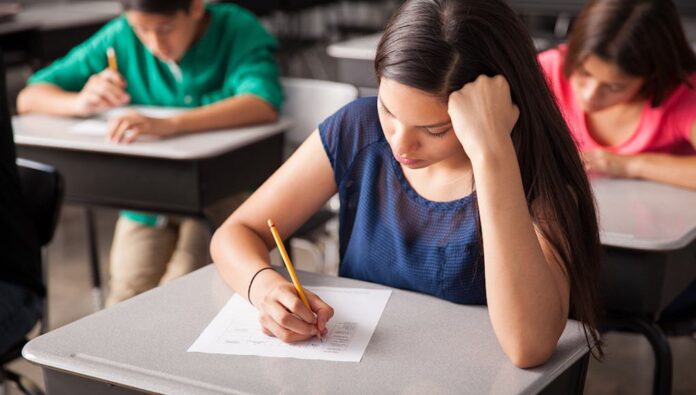Robert Marzano says, “Positive relationships among teachers and students is one of the most frequently cited variables associated with effective instruction.” It is more effective for instructional strategies to have strong relationships. Not only online sources can help to increase their motivation, where students write “domyhomeworknow”. These are great ways to build trust with your students and find out what is most important to them.
1. Give students the chance of expressing their greatest values.

The right-hand art project shows students cutting silhouettes out of themselves and then decorating them with symbols to represent important events and interests. This is a fun way for students to start school and provides valuable insights into their lives. This is a great way to learn about your students!
2. Get better data about your students and make better decisions.
When you collect data digitally, it is instantly available for you to use throughout the year in making decisions regarding class projects and assessments. You can also draw upon the strengths and passions of individual students.
3. Ask students what you expect of them and ensure you meet those expectations.

Students will show that they are more interested in your efforts to win their respect when they feel they have a genuine interest in you. Asking students for their opinions on what constitutes a great teacher, and then doing your best in living up to them, will demonstrate to them that you value what they have to say.
Make sure to give students options whenever possible
Many educators agree to Daniel Pink’s statement that an intrinsic motivator is one that has autonomy. There are many skills that teachers must have to teach at each level. However, there is a lot of autonomy for how we can teach these skills and how we assess them. This is where we can offer students some options. You can:
4. Let students decide what they want to study.
“Genius Hour” is a popular trend in education. It’s also known by the names “20% Time” (“Passion Time”) and “20% Time”. The idea was inspired by a concept that Federal Express and Google employed where employees had time to pursue their own creative projects. Since then, teachers from all walks of the world have created ways to incorporate this time in their school schedules.
5. Offer students the option of learning how they prefer.
It may not be possible to allow students to choose their learning topics. They still have choices. You can offer students different options to reach their learning goals. Many teachers offer “Choice Boards” to students that allow them to personalize their learning experiences. This art history choice board is for primary students and provides learning options to assist students in making their decisions.
6. Let students make their own assessments.

We know we need proof of learning from our students to be able to report it back to their parents or the school. Assessments can be in many forms. The same way that they can be used for presenting a variety of learning activities is to use choice boards to help you think of ways to demonstrate your learning.
Find ways to make your choices relevant for students when you can’t offer them options.
This is where the interest inventories and other relationship-building activities will become useful. To be motivated to make an effort students need to see connections between the material they are learning and their personal lives. How many times do we hear our students ask us, “When are you going to use that?” Their engagement will increase if we can demonstrate how our lessons are applicable to their lives. And that, in turn, will lead to greater motivation. Use these ideas to create real-world connections.
7. Social media can be leveraged.
Instagram is popular with teenagers. Instagram is a great way to get your students’ opinions on Steinbeck’s Of Mice and Men. This method increased engagement, and the students loved learning about Instagram nuances.
8. Instead of creating abstract challenges, make learning authentic.
Many educators see value in authentic problems as a basis for learning.
9. Incorporate pop culture in your lessons with song lyrics, memes or clips from movies and TV shows.

In order to teach students about figurative grammar, teachers may use music or videos as examples. Students will be more interested in learning about the French Revolution, rather than watching a PowerPoint presentation.
Demonstrate goal-setting & goal-tracking
Students who are intrinsically motivated do not care about getting the highest grade or winning the most prestigious trophy. They care more for measuring their own learning and progress, rather than comparing themselves to others. Here are some tips to help them keep track of their progress and monitor their goals.
10. Encourage students to set goals.
You may have made New Year’s resolutions in the past. It is easier to forget about them. It makes your commitments more binding to make them visible. Students are more likely than others to reflect upon their goals and know when they have been met.
11. Create vision boards using Canva.
12. Provide opportunities to reflect upon these goals.

If you don’t track your progress regularly and think about ways to reach them, goals can be meaningless. Encourage students to use reflection sheets, such as this one, on a daily basis or weekly basis in order to help them reflect on their progress toward achieving their goals.
Offer consistent and constructive feedback
One college professor used underline entire assignments, then write a B at the top of papers without explaining. This information was useless, and it did not provide any opportunities for growth. Student’s intrinsic motivation to learn will rise when they are able to receive thoughtful feedback. This is because they know that their hard work has value, and their instructor is willing to help.
13. Give constructive and objective feedback.
14. Encourage students with meaningful praise.
In the long-term, “You’re smart” can demotivate children. They will be less inclined to try new things if they hear this praise.
15. Give feedback promptly

You know how important feedback is for your fitness activities, not just when it’s too late. Teachers and students will be able to make the most of their potential learning by regularly administering formative assessment such as comments in Google Docs or using student response option to gain a better understanding of the level of learning.
In a world that depends too much on external motivators to measure and encourage success, it can be challenging to forgo them in order to help students build a stronger foundation.
When we show our students they can trust us to take care of their needs and work in their best interests they will slowly learn the importance of learning for their own benefit. It is far more satisfying to drive yourself than to allow others to drive you.






